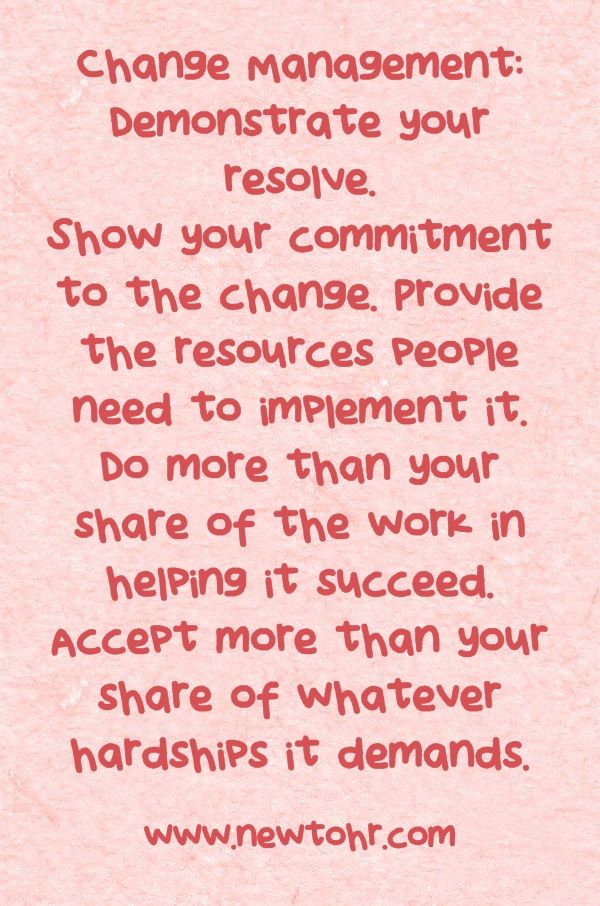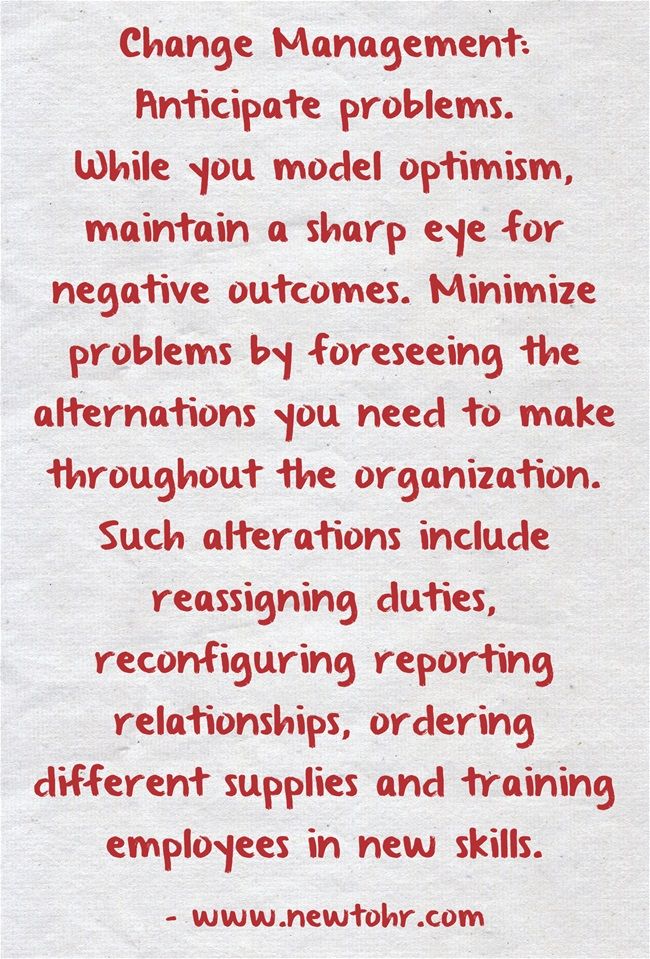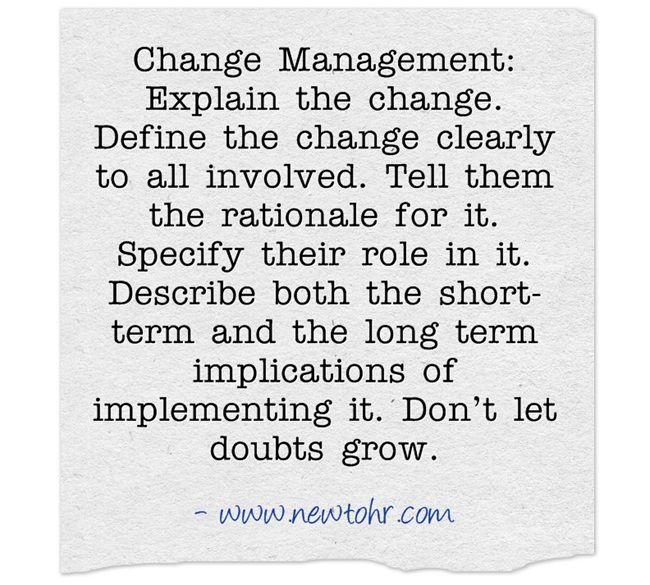
Change Management – Steps To Follow
What does change management mean?
Wikipedia defines change management as:
Change management is an approach to transitioning individuals, teams, and organizations to a desired future state.
In a project management context, change management may refer to a project management process wherein changes to the scope of a project are formally introduced and approved.

We Have To Understand What Change Management Is!
Any time we hear the words “change management”, the majority of us think, “Oh no, what’s up now?” We get an uneasy feeling that change will move us out of our comfort zone and into the unknown. It is human nature for us to become set in our ways. We have grown accustomed to doing things a certain way and now someone wants to change them.
Many associate fear with change because they do not know what to expect or what is going to happen – fear of the unknown consumes their thoughts and interferes with normal work routines and job security. Thoughts such as, “we are opening up a new department in two days, scenario” or “we are having financial difficulties and must reorganize, which includes, reduction in force of 50 employees in 2 days, scenario” can invade the mind and generate anxiety and insecurity in the workplace.
If the scenario is dealing with the opening of a new department in 2 days, the situation will be a challenge. It will require lots of hard work, long hours, and stressful situations, but it can be done. Once completed, you will look back and realize even though it was a change, the end result was a positive change for the organization. It was done to increase revenue.
Being faced with the “we are having financial difficulties and must reorganize, which includes a reduction in force of 50 employees in 2 days, scenario” you have a much larger challenge on your hands.
This will be a life changing event for everyone involved. Some individuals will have more trouble finding a job than others. You may have employees who have worked at the organization, in the same position, for 30 years and never worked anywhere else.

There is a lot of administrative preparation involved. You must notify the employees of the reduction in force, decide if you will be offering any severance package, how long can they keep their health insurance, and will you offer any placement assistance. You have to be there to help these employees. There will be some very trying emotional times.
This change can be perceived as negative and for the most part it is, but this had to be done in order to save the company.
When you look at the bigger picture you had to make the changes in order to save the company and keep the remaining employees employed!
So the final outcome makes it a positive change.
Here are a few key suggestions that will assist you with “Change Management”:
Communication
Often, people do not realize the importance of communicating what change or changes are going to transpire. This is a huge mistake and causes much upset and turmoil.
Over communicating is far better than no communication at all. You need to develop a communication plan (a written plan) and make sure you follow it. The plan must include the task and the defined timelines to be completed. Make sure you adhere to it. By following the plan you will ensure things are being communicated timely and as planned. There are several ways to communicate;
- you can speak in person;
- conduct Employee Forums;
- use email;
- communicate plans via bulletin boards;
- and send out memorandums to each department.
Dealing With The People Affected By The Change
One other very important item to consider is the people who are being affected by the change process. The change or changes have an impact on these people’s lives.
Depending what the change(s) are, determines how significant the impact is. These employees need to know that you understand and support what they are going through. This is key to helping them adjust to the change(s). You need to have patience when dealing with any negative issues. Let them know you respect their feelings and that it takes time to adjust to new changes.
They need to know that change is similar to dealing with loss. Something you are familiar with and have done for a long time is going away. You have to be able to grieve your loss; it really can affect an individual that way. The best thing you can do as an employer is to help them through the process. The employees need to know their employer supports them through the change. You will see in the end that it will pay off. The employee will be appreciative and it will show in their work productivity and loyalty.
 Involve Employees In The Process
Involve Employees In The Process
It is important that you involve the employees in the change process; you want to involve as many employees as possible. Develop a plan which incorporates utilizing as many employees as possible. Not all employees will be interested in embracing this new found adventure, but there are those that will. Do, by all means, get them involved. By involving them they feel a part of the change and it may make the impact of the change less difficult to accept and deal with.
There is nothing worse than having to deal with changes and not even being offered the opportunity to being a part of making it happen. Often, the affected employees may be the ones with the best ideas to accomplish the task.
These are just a few suggestions; I know there are a lot more. I hope this might help you make things a little easier when dealing with change management.
Remember, without change, there is no progress.
What suggestions would you add to the list to make “Change Management” easier for the employees?
© New To HR


